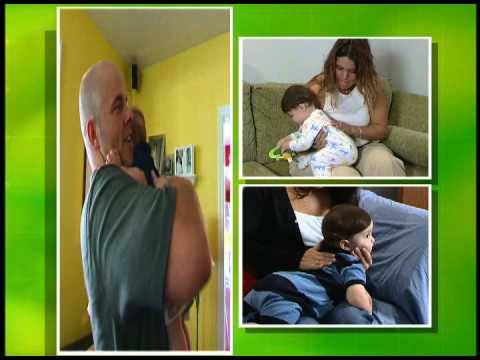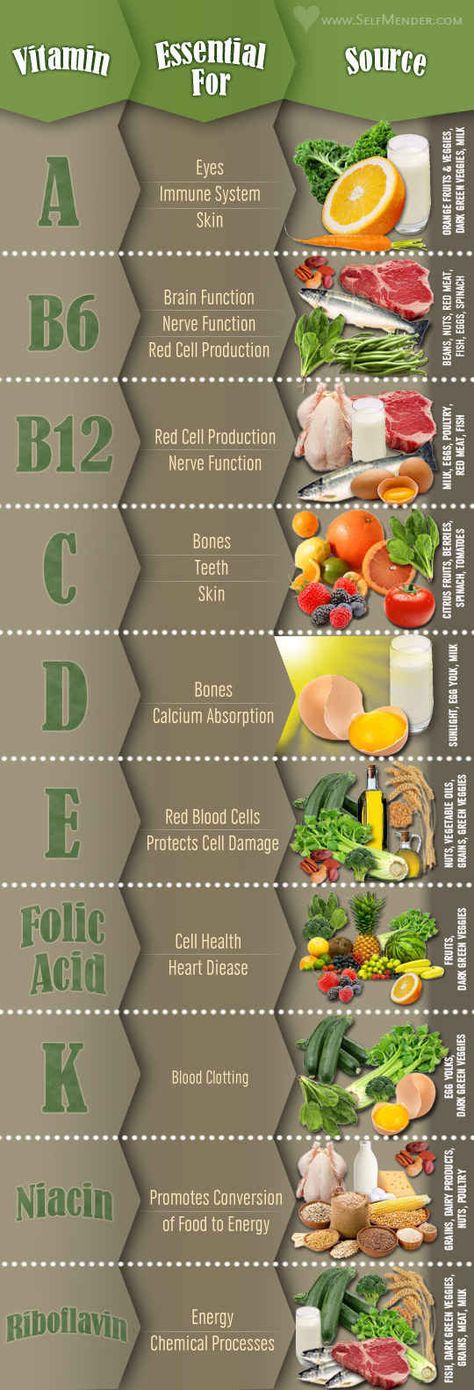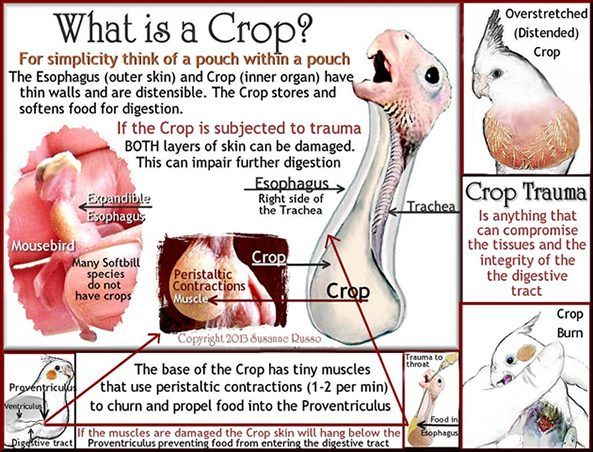Steaming broccoli for baby food
How to Cook Broccoli for Baby Led Weaning (with recipes)
Jump to Recipe
Broccoli is the perfect first food for babies! There are so many ways to prepare it for baby led weaning. Let me show you how!
Jump to:- When can babies eat broccoli?
- Health benefits
- Does broccoli make baby gassy?
- Cooking Methods
- How to cut for baby led weaning
- Frequently Asked Questions
- Baby-Friendly Broccoli Recipes to try
- Broccoli for baby led weaning
When can babies eat broccoli?
This nutritious green vegetable can be offered to babies as soon as they’re ready to start solids, usually around 6 months. It’s important to remember that your baby is unique and that rather than going by the calendar, you need to make sure your baby is DEVELOPMENTALLY ready to start solids.
If you’re unsure, be sure to grab my FREE handout!
Health benefits
Broccoli is bursting with vitamins and minerals, including vitamin C, K, A, as well as folate and potassium. It's also rich in fiber and various antioxidants.
It even contains a small amount of iron and zinc, top priority nutrients for babies.
Related post: Best iron-rich foods for babies and toddlers
I highly encourage you to introduce bitter flavored foods, early and often. Babies are born with an innate preference for sweet and salty flavors while disliking bitter and sour flavors.
Research also shows that there is this a narrow “window of opportunity” when babies are most willing to accept new foods. Once your child enters toddlerhood and food neophobia enters the picture, they will only want to eat things that are familiar and safe to them.
All this to say, bring on the broccoli (and kale, spinach, brussels sprouts, cabbage....)
Does broccoli make baby gassy?
Foods that are rich in fiber tend to cause gas. This list includes beans, cruciferous vegetables, oatmeal, prunes, peaches, and pears.
Does this mean you should eliminate them completely? Absolutely not! These foods offer so many beneficial nutrients, necessary for your baby’s growth and development.
And as mentioned above, early introduction to a wide variety of flavors and textures is key in minimizing picky eating down the road.
If your baby is gassy but doesn't seem to be in discomfort, there's no reason to worry. If your baby is extra gassy after eating certain foods, just don't overload them with those foods.
Cooking Methods
Here are the two best cooking methods for babies. It's VERY important that the vegetable is cooked until soft enough to be easily smooshed between thumb and forefinger.
You can use either fresh or frozen broccoli.
I personally don't recommend roasting for this age as the exterior of the vegetable can get too crispy or even burnt before it softens. You can boil, but I don't recommend it as most of the nutrients will leach into the water.
Steam
Place water in a pot, add steamer basket, and bring to a boil. Add broccoli, cover, reduce heat to medium, and cook for 5-6 minutes. It should be easily pierce-able with a fork.
It should be easily pierce-able with a fork.
Be careful not to overcook or you will end up with a not so appetizing greenish-yellow mush.
Steam Roast
This method is my personal favorite! If you are new to this cooking method, be prepared to fall in love HARD! So much more flavorful than plain steaming.
How it works: The hot oven and moisture from the veggies create steam (once covered) making them soft, but because they’re roasted, the flavors become more concentrated.
Simply add broccoli to a baking pan, toss with oil and seasoning(s) of choice, COVER, and roast at 425°F for 15-20 minutes! Perfectly soft and flavorful!
Learn more about steam roasting as well as cooking times for ALL other vegetables
How to cut for baby led weaning
Related Post: how to serve the right food size and texture
For 6-8 months old:
Bigger is better and safer at this age so they can easily grab the food with their palm and bring to mouth. So welcome those giant florets ;).
So welcome those giant florets ;).
Try to leave as much of the floret stem as possible to make it easier for your baby.
9+ months old:
As your baby develops their pincer grasp and is able to pick up small pieces of food using their thumb and finger, you can cut into small, bite-sized pieces. I still suggest continuing to offer larger pieces so they can practice taking bites.
This is a good time to introduce utensils. Your baby will most likely just play around or toss it. But it's still great for exposure! Continue role modeling too.
12+ Months old:
Depending on your child's chewing skills and your comfort level, you can start to offer slightly firmer, but still soft-textured foods. Try shortening the cooking time by several minutes and see how your baby does.
Continue offering utensils and your child will likely surprise you one day!
Also try adding raw broccoli "sprinkles!" Simply shave off the tips of the top with a knife or kitchen shears.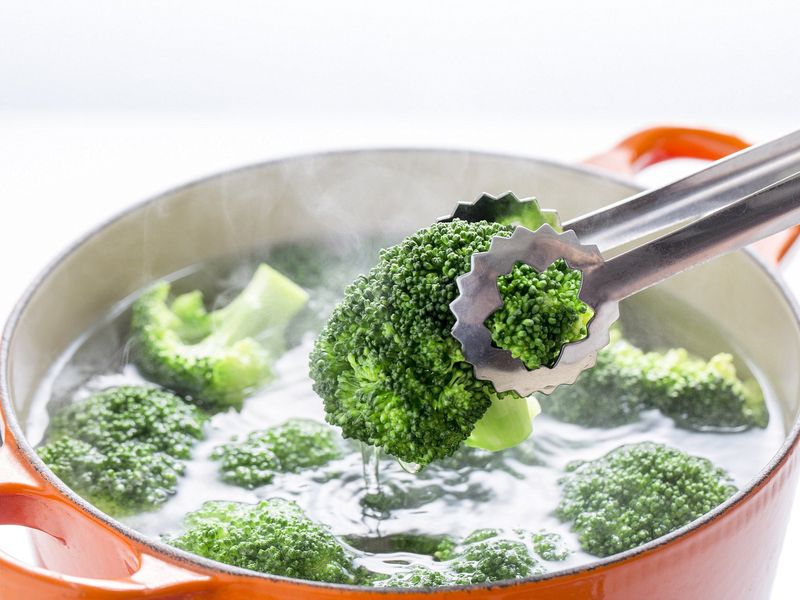
Alternatively, you can pulse the raw florets in a food processor (I love using my manual mini food chopper) until finely chopped. Now add to oatmeal, yogurt, toast, etc!
Frequently Asked Questions
Is broccoli safe for babies?
As long as it's offered in appropriate size and texture, it is totally safe. Broccoli allergy is very rare as well.
How should I store leftovers?
Transfer to an airtight container and keep in the fridge for up to 5 days. Since they're very soft in texture, I don't recommend freezing them. If you have a lot of leftovers and want to invite more variety, add them to the recipes I suggest below!
How should I reheat leftovers?
Again, because the florets are so soft, reheating will only make them mushier. Serve straight from the fridge or allow to come to room temperature.
Baby-Friendly Broccoli Recipes to try
I cook with this "mini tree," as my son likes to call it, A LOT. It's so affordable, nutritious, and versatile. It's actually one vegetable that my firstborn had a really difficult time learning to enjoy so I came up with all kinds of ways to make it fun and appealing for him.
It's so affordable, nutritious, and versatile. It's actually one vegetable that my firstborn had a really difficult time learning to enjoy so I came up with all kinds of ways to make it fun and appealing for him.
Hope these recipes will be a hit with your child as well!
Dips/Baked Goods
- Broccoli White Bean Pesto
- Broccoli hummus
- Vegan Vegetable Quinoa Muffins
- Baked Chickpea Veggie Cakes
- Salmon Quiche
Breakfast
- Vegetable Baby French Toast
- Vegetable Baby Oatmeal
- Overnight Oats (or quinoa)
- Instant Pot Mashed Sweet Potatoes
- Lentils for Babies
- Savory Baked Oatmeal with Vegetables
- Tofu Veggie Scramble
Lunch/Dinner
- One Pot Creamy Broccoli Pasta
- Instant Pot Peanut Chicken and Broccoli
- Mini Baked Canned Salmon Patties (egg-free)
- Pizza Quesadilla
- Healthy Korean Beef and Broccoli Quinoa
- English Muffin Baby Pizza
- Low-sodium Moo Goo Gai Pan
Did you make this recipe? Leave a rating below and let me know how you liked the recipe! Your feedback means so much to me!
Broccoli for baby led weaning
Broccoli is the perfect first food for babies! There are so many ways to prepare it for baby led weaning. Let me show you how!
Let me show you how!
5 from 5 votes
Print PinPrep Time: 5 minutes
Cook Time: 15 minutes
Total Time: 20 minutes
Servings: 8
Author: Min | MJ and Hungryman
- ▢
Steamer
- ▢
Baking Mat
- ▢ 1 pound broccoli, chopped into florets
- ▢ 2 tablespoons avocado oil (for steam roast)
- ▢ herbs/seasonings of choice (optional but highly recommended)
Steam
Cut broccoli into large florets.
Add water to a pot and insert the steamer basket. The surface of the water should be under the basket. Pour some out if need be.
Bring the water to a boil. Add broccoli, cover the pot, and reduce the heat to simmer. Cook for about 5 minutes, or until easily pierce-able with a fork. Don't overcook or you will end up with super mushy and greenish-yellow color.
Steam roast
Preheat oven to 425° Fahrenheit.
 Cut broccoli into large florets and place on a baking pan.
Cut broccoli into large florets and place on a baking pan.Toss the vegetables with oil and herbs/seasonings of choice. It's ok if they overlap. It will create more steam, resulting in softer texture.
Cover with foil or silicone baking mat.
Place in the oven and cook for 15-20 minutes until soft.
To store:
Transfer to an airtight container and keep in the fridge for up to 5 days. These won't freeze well. If you have a lot of leftovers and want to invite more variety, add them to the recipes I suggest.
Because the florets are so soft, reheating will only make them mushier. Serve straight from the fridge or allow to come to room temperature.
Calories: 50kcal | Carbohydrates: 4g | Protein: 2g | Fat: 4g | Sodium: 19mg | Potassium: 179mg | Fiber: 1g | Sugar: 1g | Vitamin A: 353IU | Vitamin C: 51mg | Calcium: 27mg | Iron: 1mg
Course Side Dish
Cuisine American
Tried this Recipe? Tag me Today!Tag me @KidFriendly.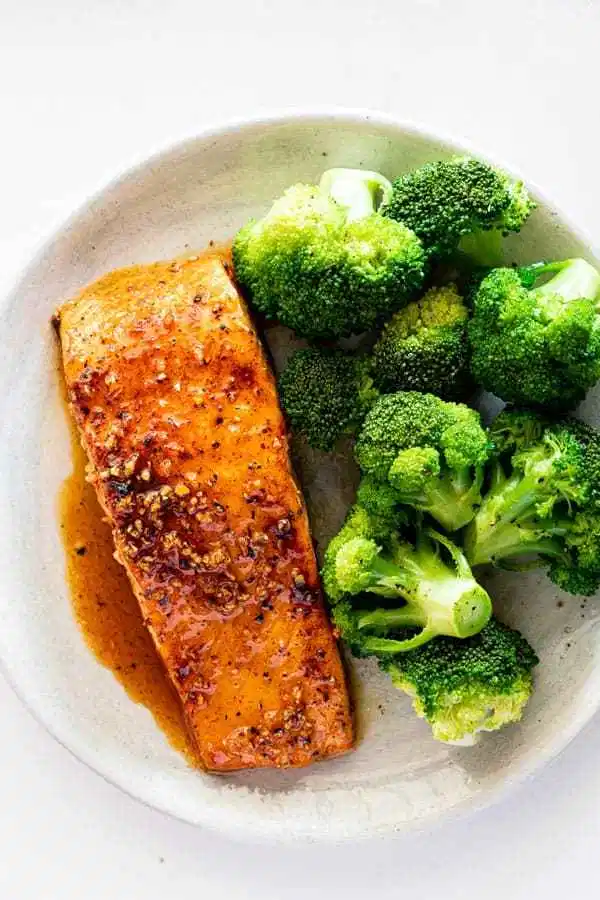 Meals today!
Meals today!
The Best Broccoli Baby Food Puree (Stage One)
Home » Feeding Style » Baby Food Purees » Stage One » The Best Broccoli Baby Food
This Broccoli Baby Food recipe is a great way to introduce healthy green vegetables into your baby’s diet. A delicious puree that is full of essential vitamins and healthy fats for a growing baby. If you’re looking for an easy green starter puree for your baby, this is it! Great baby food for 4-6 months and older – stage 1 baby food!
Medically reviewed and co-written by Jamie Johnson, Registered Dietitian Nutritionist (RDN), and Lauren Braaten, Pediatric Occupational Therapist (OT).
Broccoli Baby FoodDo you want your child to grow up loving broccoli? Then this puree is a good place to start! 🥦
We start with the main star of the show – broccoli! By gently steaming the broccoli, we are able to preserve its fresh taste and bright green color without getting a too intense broccoli flavor or drab color. I’m also inviting you to try adding in a small amount of peeled apple, pear or white potato. This addition helps give the puree just enough starch and fiber to make a truly creamy and smooth puree that helps balance out the, sometimes, intense broccoli flavor. And for a boost of healthy fats, we are going to drizzle in a little bit of high-quality olive oil.
I’m also inviting you to try adding in a small amount of peeled apple, pear or white potato. This addition helps give the puree just enough starch and fiber to make a truly creamy and smooth puree that helps balance out the, sometimes, intense broccoli flavor. And for a boost of healthy fats, we are going to drizzle in a little bit of high-quality olive oil.
What this simple recipe gives us is a truly delicious puree that baby is going to dive right into!
First time making homemade baby food? Then, I would suggest that you start by reading my very in-depth Guide on how to Make Homemade Baby Food – which goes over all the important information such as the best cooking tools to have on hand, safe storage, how to know when baby is ready for solids, how to introduce purees, the best first foods for baby, and more! You can also check out my best-selling cookbook for even more information and recipes!
Broccoli Puree Video
Watch this video to see how easy it is to make this Broccoli Puree!
Reasons to Love this Broccoli Baby Food- nutrient-dense – contains fiber, iron, calcium, antioxidants, folate, potassium, vitamins A, C and K
- creamy green puree baby will love
- filled with healthy fats for baby’s growing brain and bones
- 4-6+ months and older
- freezer-friendly
- stage 1 baby food puree
- homemade
Health Benefits of Broccoli
Broccoli has a whole host of health benefits!
- The fiber found in broccoli promotes gut health and heart health.

- It helps support your immune system with the help of vitamin C.
- Broccoli is high in vitamin K, which is important in blood clotting.
- The antioxidants found in broccoli may help protect against certain types of cancers.
- Vitamin A and antioxidants found in broccoli promote eye health.
Ingredients
Make sure to read the recipe card below for full ingredients and instructions!
- Broccoli: Being the start of the show, we need to use fresh broccoli that is bright and green with no mushy parts. You can cut up a head of broccoli or get pre-cut florets. You can also use frozen broccoli in this recipe, but the taste will be slightly more intense.
- Apple: We are going to use one small peeled apple in this recipe to give the puree a smooth consistency. You can also use a small white potato or pear, if you prefer.
 If you want to keep the puree a single ingredient puree, then just leave the apple (potato or pear) out, the puree will be slightly different but still amazing.
If you want to keep the puree a single ingredient puree, then just leave the apple (potato or pear) out, the puree will be slightly different but still amazing. - Olive Oil: For an added boost of healthy fats, we are adding in a little drizzle of a high-quality olive oil. You can omit this if you prefer.
Shopping & Storing Tip: When purchasing broccoli, look for a firm head with dark-green crowns and tightly-closed buds. Broccoli is a hardy, cool-weather vegetable, so it loves your cold refrigerator. Wrap the broccoli in a few dry paper towels, to help wick away any excess moisture, and store in an unsealed plastic bag.
Step-by-Step Instructions- Prep Broccoli: roughly chop a bunch of broccoli and peel and chop one small apple or white potato.
- Steam: place the broccoli and apple/potato into a steamer basket and steam until tender.
- Puree: transfer cooked produce into a blender or food processor and add a drizzle of olive oil.
 Puree until smooth.
Puree until smooth. - Serve or freeze.
These tools will make it a lot easier for you to make this healthy Broccoli Puree. For more of my favorite kitchen tools make sure to check out my shop.
- Steamer Basket
- Medium Saucepan
- Blender or Food Processor
- Freezer Tray
- Storage Containers for Fridge
- highchair
- suction bowl or baby bowl
- baby spoon
- open lid cup
- bib with catch pocket
While I love the clean flavor of steamed broccoli, there are several different ways you can cook broccoli for baby food.
RoastingPlace broccoli and small chunks of potato onto a baking sheet and roast in the oven at 425 degrees F, for 20-25 minutes or tender when pricked with a fork. Puree in a blender as directed below.
BlanchingBring a medium saucepan filled with water to a boil, add in the potato and cook for 6 minutes, then add in the broccoli and cook for 2 minutes or when tender with pricked with a fork.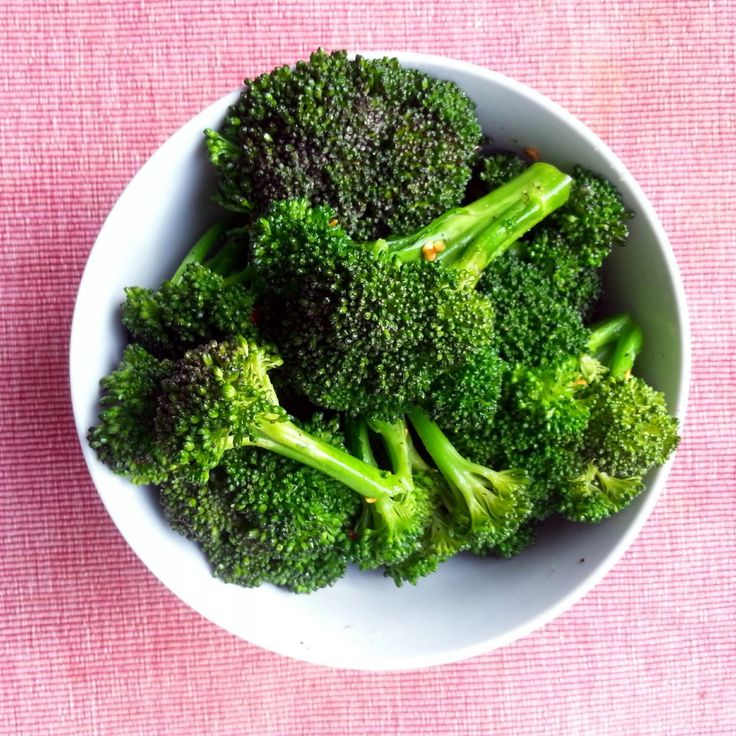 Drain the water, let cool slightly. Puree in a blender as directed below.
Drain the water, let cool slightly. Puree in a blender as directed below.
In this recipe, we are adding a small drizzle of high-quality olive oil into the puree, but feel free to use the following spices instead – chopped chives, mint leaves, chopped cilantro, cumin, or a squeeze of fresh lemon juice.
Tip on Spices: I always recommend adding spices to any baby food puree, but you can add or leave out spices in all of your baby food. You do you! Either way, this puree will taste amazing.
Frequently Asked Questions
When can baby eat broccoli?
Baby can have broccoli as one of their first foods. When a baby can start on solids is determined by their own rate of development, which generally comes between 4-6 months of age. Some of the developmental milestones babies need to reach in order to start solids include: if your baby has solid control of their head and neck, if your baby has doubled in weight, and if your baby is reaching for or opening their mouth when you eat (see my guide here). Before you start your baby on purees, you should consult with your pediatrician to make sure your child is developmentally ready.
Before you start your baby on purees, you should consult with your pediatrician to make sure your child is developmentally ready.
Can broccoli be baby’s first food?
Broccoli can 100% be your baby’s first food if you want it to be. It is recommended to wait to introduce the top eight allergen foods to your baby once a few other well-tolerated foods have been introduced, but otherwise, foods can be introduced in any order so choose whatever you are most excited for your baby to have.
Is broccoli a common allergen for baby?
No, broccoli is not a common allergen, however, as with any food, start with a small portion and be aware of any signs that might be an allergic reaction after introducing it.
Does broccoli cause constipation for babies?
Broccoli does not usually cause constipation in babies, and it can actually help alleviate constipation due to its high fiber content.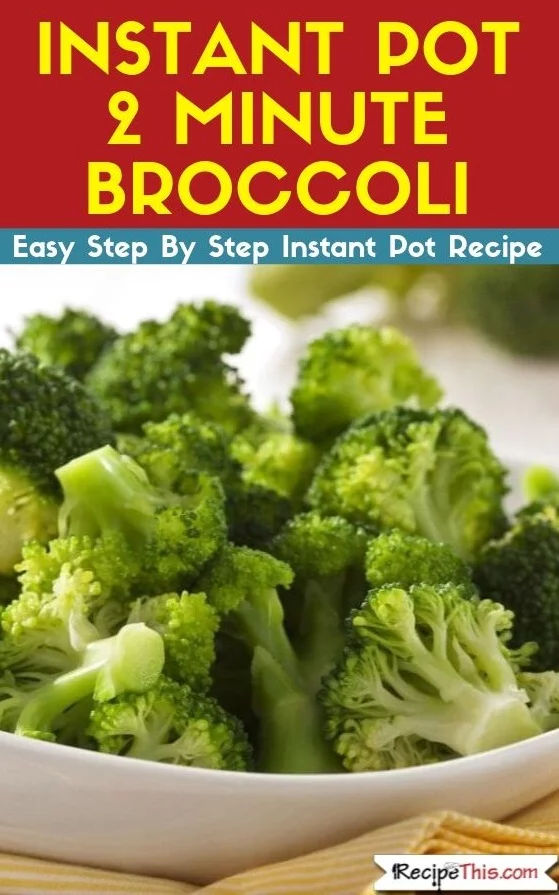
You can store it in an airtight container in the fridge for up to 4 days.
FreezerThis puree can be frozen for up to 4 months.
- Spoon puree into a freezer storage container – do not overfill.
- Place the lid on the storage container or cover with a piece of saran wrap and label with date and recipe name.
- Place the tray into the freezer and let freeze completely – preferably overnight.
- Pop out the baby food cubes and place in a zip-lock baggie or stasher bag – don’t forget to re-label the baggie or stasher bag for future reference.
Need more information on how to store your baby foods – head over to my Best Baby Food Storage Containers – Plus 6 Tips on Freezing and Thawing post!
Label Tip: Don’t forget to label your purees before you place them in the fridge or freezer with the name of the puree and the date you made it. Take it from me, you will completely forget when and what is in your freezer by the end of the week.
Take it from me, you will completely forget when and what is in your freezer by the end of the week.
While Broccoli Baby Food is great by itself, it’s also super easy to mix and match with other nutrient-dense baby food purees. Give these fun flavor combos a try!
- Apples
- Asparagus
- Quinoa Baby Cereal
- Chicken
- White Beans
- Softened Tofu
- Spinach
- Green Beans
- Yogurt
- Mango
Broccoli for Baby-Led Weaning: Carrots are also a great food to serve to your baby whole for baby-led weaning (6+ months) or as a finger food (9+ months). You can always serve baby a combination of purees and finger foods right from the start.
Feeding Tips
- Make sure baby is showing readiness signs for eating – good control of their head and trunk, sitting with minimal assistance, bringing hands or toys to their mouth, and appearing interested in your food when you’re eating.
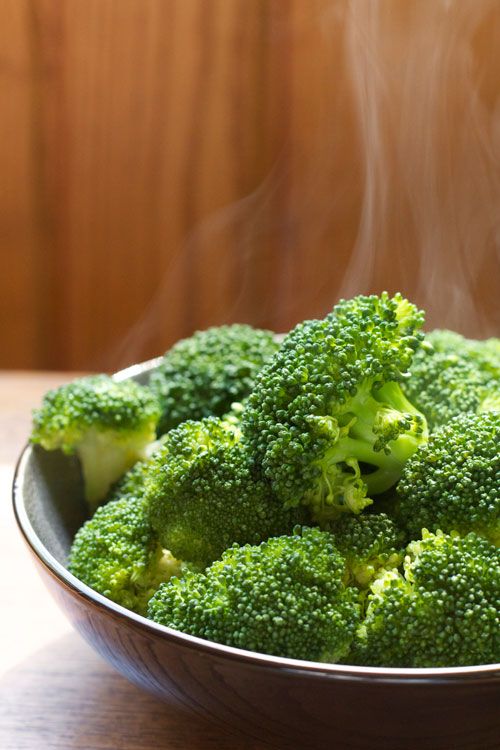
- Try adding a little seasoning or spice to purees – babies like flavor! Or consider changing the temperature of purees from time to time, to slightly warmed or slightly chilled. Varying these aspects adds to the sensory experience!
- Place a small amount of puree on the tray during spoon feeding, so that your baby can dip their fingers or hands in the puree. Allowing baby to explore foods in this way helps them learn to self-feed and can help them be more willing to try new textures and foods in the future.
- Throwing spoons is a common phase that all babies go through at one point or another. One of the best ways to handle spoon throwing is to ignore it and keep feeding baby as usual (with an extra spoon you already have at the table). If baby ends up also throwing back up spoons #2 AND #3, simply encourage your baby to eat with their hands until they appear to be finished with the meal.
Or watch a shortened version of this video here.
- 2 cups broccoli, chopped into small florets
- 1/2 apple, pear or small white potato peeled and chopped (optional)
- 1 tbsp good quality olive oil (optional)
Prep: In a medium saucepan, bring 2 inches of water to a boil over medium heat.
Steam: Place the broccoli and apple/potato/pear into a steamer basket and place over boiling water, cover and steam for 8-10 minutes or until the broccoli and apple are tender. Reserve the water from the steamer. Let cool slightly.
Transfer: Add the broccoli and apple to a blender or food processor.
Add Olive Oil: Drizzle the olive oil into the blender or food processor.
Blend: Puree on high for 1-2 minutes or until smooth, adding in additional liquid (reserved water, fresh breast milk or formula) in 1/4 cup increments if needed.
 I had to add in 1/4 cup of water to the puree pictured.
I had to add in 1/4 cup of water to the puree pictured.Eat: Serve to your baby or freeze for a later meal.
Age: 4-6 months and up
Yield: roughly 12 ounces
Adding In Spices: Feel free to add in 1 tsp of chopped chives, 2-3 mint leaves, 1 tsp of chopped cilantro, 1/2 tsp cumin or a squeeze of fresh lemon juice.
Blender
Freezer Tray
Tripp Trapp High Chair
Glass Baby Food Jars
Silicone Baby Bibs
Calories: 25kcal, Carbohydrates: 3. 2g, Protein: 0.7g, Fat: 1.2g, Saturated Fat: 0.2g, Sodium: 6mg, Potassium: 106mg, Fiber: 0.7g, Sugar: 0.4g, Calcium: 8mg
2g, Protein: 0.7g, Fat: 1.2g, Saturated Fat: 0.2g, Sodium: 6mg, Potassium: 106mg, Fiber: 0.7g, Sugar: 0.4g, Calcium: 8mg
Did you make this recipe?
Tag @babyfoode on Instagram and hashtag it #babyfoode!
Email <em>a Friend</em>
How to cook broccoli for the first feeding: recipes and benefits
Broccoli is an ideal vegetable for the first feeding of a child. We talk in detail about its beneficial properties in the article Broccoli in children's nutrition. And now we want to share a recipe for how to cook broccoli for the first feeding.
Despite the fact that broccoli is a hypoallergenic product, it should not be introduced into the baby's menu until 8-10 months old, as it can cause increased gas formation in the baby's intestines and cause colic. nine0005
If you prefer homemade mashed vegetables for baby food, read our step-by-step instructions to learn how and how much to boil broccoli.
See also: First Food Vegetable Puree with Broccoli and Cheese (9-12 months)
Our step-by-step guide will help you make your own gentle broccoli puree for baby's first food.
Step 1: Select and buy broccoli
You can use either fresh or frozen broccoli for mashing. When buying fresh kale, look for broccoli with dense green flowers (stems will be light green). The peak season for broccoli is from October to April, although broccoli is available all year round. nine0005
Step 2: Wash the broccoli
Of course, there is no need to wash frozen broccoli. However, if you are mashing fresh broccoli, separate the stems and florets and soak them in cold water for a couple of minutes. Then rinse under cool running water and dry with a paper towel.
Step 3: Cook Broccoli
Now it's time to learn how and how much to cook broccoli for baby's first feeding. So, in a medium-sized saucepan, pour water and bring it to a boil. Reduce the temperature until the bubbles are reduced. Cook broccoli until tender (about 15 minutes). Then drain and rinse the broccoli in cold water for three minutes to stop the cooking process.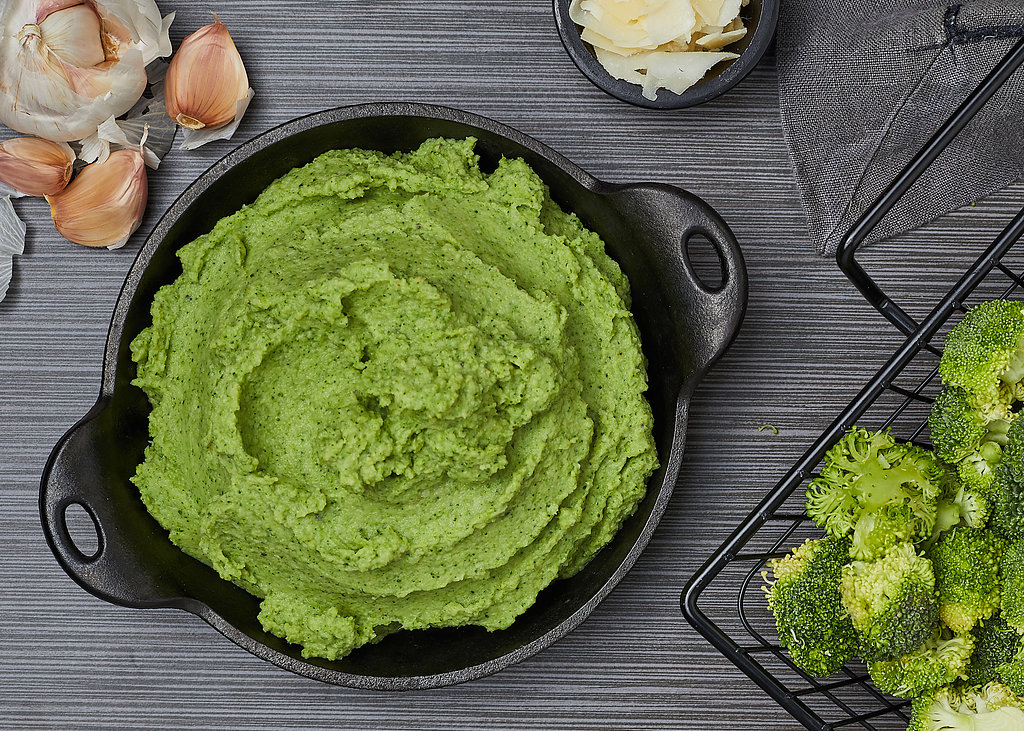 Throw it in a colander. nine0005
Throw it in a colander. nine0005
Step 4: Puree the broccoli
Puree the broccoli in a food processor or blender until smooth. To achieve the desired consistency, you can add water or breast milk.
When your baby is ready for more solid foods, usually around 10 months old, you can give him whole pieces of broccoli (chopped florets).
Step 5: Serve Broccoli Puree
Broccoli is perfect with other vegetables, grains and proteins. Try mixing mashed broccoli with:
- carrots;
- sweet potatoes;
- sweet potatoes and raisins;
- brown rice;
- lentils;
- beef;
- chicken;
- salmon;
- durum wheat pasta;
- cheese sauce; nine0039
- brown rice and cheese sauce;
- with green peas and cheese sauce.
Based on materials from parents. com
com
Now you know how and how much to cook broccoli for baby food and you can cook broccoli for the first baby food yourself.
More recipes for baby first foods can be found at the link below.
See also: Fish puree from broccoli and potatoes for children up to a year
Read also: Menu for a 7-month-old baby: making a healthy diet
Read also: Foods that a nursing mother needs to urgently refuse with colic in a newborn
|

 As in every business, there are quite a few professional secrets in cooking. You can get acquainted with these sacraments on the pages of the site. Here you will find simple homemade recipes with photos for a family dinner and complex step-by-step recommendations for a festive banquet. Do not be afraid of failures, burnt cakes and tough meat. Follow our instructions exactly, spice them up with your good mood and everything will work out. Tasty pastime on the pages of the site and bon appetit! nine0005
As in every business, there are quite a few professional secrets in cooking. You can get acquainted with these sacraments on the pages of the site. Here you will find simple homemade recipes with photos for a family dinner and complex step-by-step recommendations for a festive banquet. Do not be afraid of failures, burnt cakes and tough meat. Follow our instructions exactly, spice them up with your good mood and everything will work out. Tasty pastime on the pages of the site and bon appetit! nine0005 
